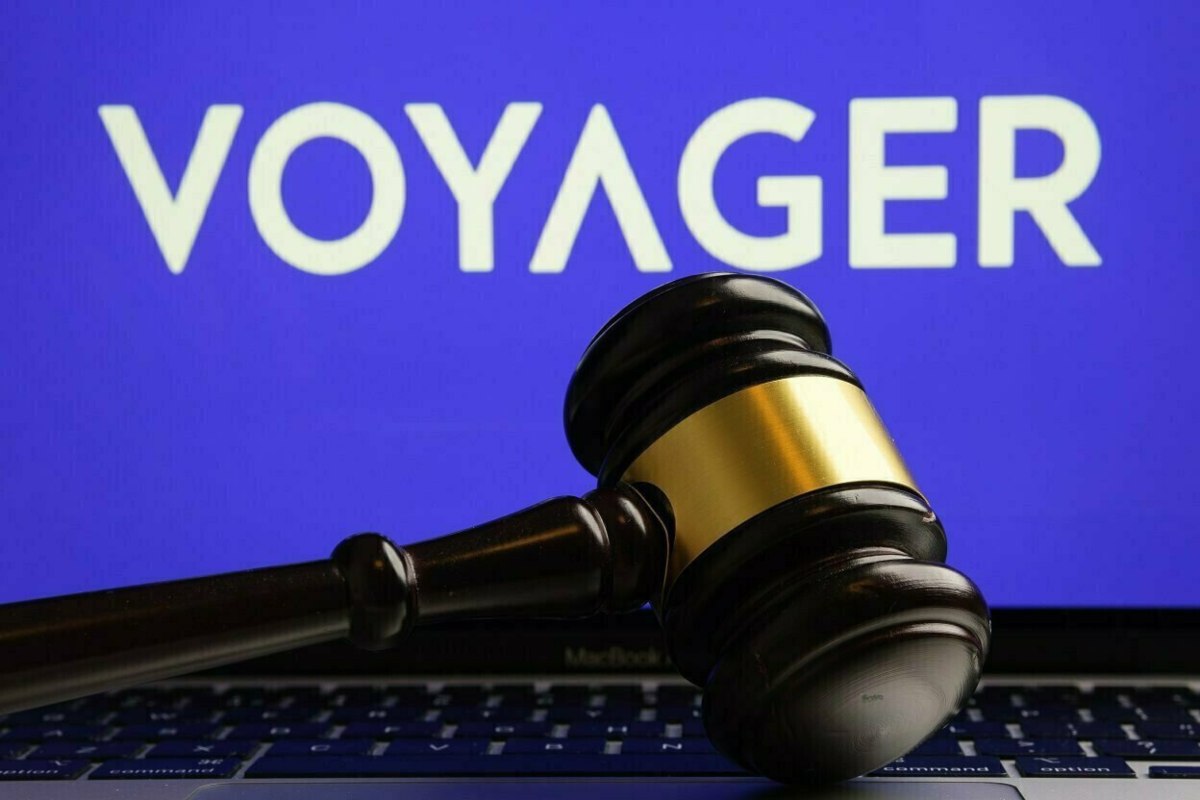Bankrupt crypto lender Voyager Digital has seen more than $250 in net outflow since it resumed withdrawals on June 23, a year after it filed Chapter 11 and halted withdrawals.
As per data from Dune Analytics, the platform currently holds $176 million worth of cryptocurrencies.
Voyager Digital has a Clean Asset ratio of 96.15%, excluding its native token VGX.
The platform’s holdings include 2,287.4 BTC, 27,363.7 ETH, 18,558,340 USDC, 2,060 trillion SHIB, and 3,600,000 MATC.
Voyager Customers to Receive 35% of Their Deposits
Earlier in May, U.S. Bankruptcy Judge Michael Wiles approved Voyager’s proposed liquidation plan, allowing the crypto lender firm to return about $1.33 billion in crypto assets to customers and end its efforts to reorganize under Chapter 11.
At the time, Voyager announced that customers will recover about 35% of their cryptocurrency deposits.
The customers were given a choice either to withdraw the amount as cryptocurrency through the Voyager app or wait for 30 days and withdraw as cash.
Once the initial round of distributing 35% of customers’ funds is finished, Voyager will look to recover more assets to distribute to its creditors.
When Three Arrows Capital collapsed last year, it owed nearly $665 million to Voyager.
Voyager tried a couple of times to sell off its assets, but it did not succeed.
The crypto lending firm sought to sell its assets for $1.42 billion to FTX, a deal that fell through when the SBF-led exchange infamously imploded in November.
Later, Binance.US offered $1.3 billion to acquire Voyager’s assets, but the exchange called off the deal in April. CZ led exchange cited a “hostile and uncertain regulatory climate” when it pulled back from the deal.
Voyager is also currently engaged in a litigation with FTX, which is seeking to recover over $445 million in loan repayments made to Voyager before FTX filed for bankruptcy.
The resolution in FTX and Voyager litigation is not expected at least until September this year.
Bankrupt crypto lender Voyager Digital has seen more than $250 in net outflow since it resumed withdrawals on June 23, a year after it filed Chapter 11 and halted withdrawals.
As per data from Dune Analytics, the platform currently holds $176 million worth of cryptocurrencies.
Voyager Digital has a Clean Asset ratio of 96.15%, excluding its native token VGX.
The platform’s holdings include 2,287.4 BTC, 27,363.7 ETH, 18,558,340 USDC, 2,060 trillion SHIB, and 3,600,000 MATC.
Voyager Customers to Receive 35% of Their Deposits
Earlier in May, U.S. Bankruptcy Judge Michael Wiles approved Voyager’s proposed liquidation plan, allowing the crypto lender firm to return about $1.33 billion in crypto assets to customers and end its efforts to reorganize under Chapter 11.
At the time, Voyager announced that customers will recover about 35% of their cryptocurrency deposits.
The customers were given a choice either to withdraw the amount as cryptocurrency through the Voyager app or wait for 30 days and withdraw as cash.
Once the initial round of distributing 35% of customers’ funds is finished, Voyager will look to recover more assets to distribute to its creditors.
When Three Arrows Capital collapsed last year, it owed nearly $665 million to Voyager.
Voyager tried a couple of times to sell off its assets, but it did not succeed.
The crypto lending firm sought to sell its assets for $1.42 billion to FTX, a deal that fell through when the SBF-led exchange infamously imploded in November.
Later, Binance.US offered $1.3 billion to acquire Voyager’s assets, but the exchange called off the deal in April. CZ led exchange cited a “hostile and uncertain regulatory climate” when it pulled back from the deal.
Voyager is also currently engaged in a litigation with FTX, which is seeking to recover over $445 million in loan repayments made to Voyager before FTX filed for bankruptcy.
The resolution in FTX and Voyager litigation is not expected at least until September this year.
